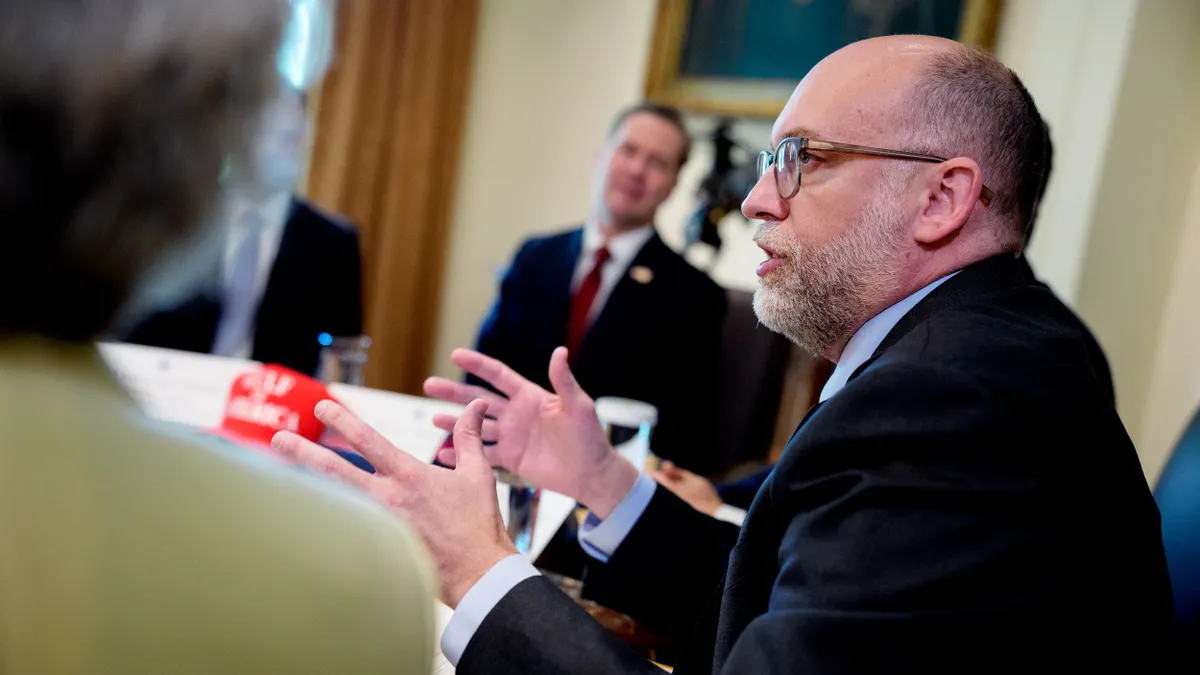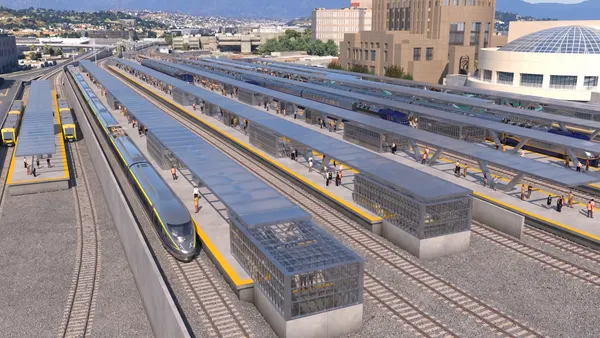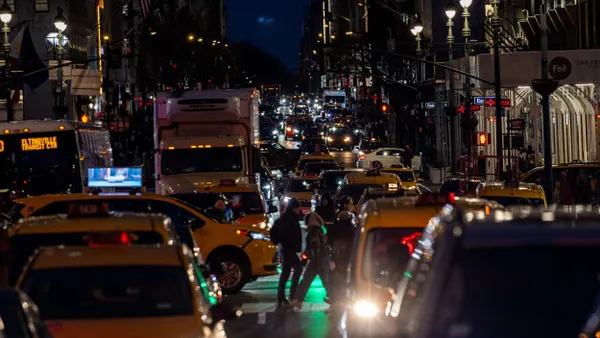Editor's Note: This piece was written by Joe Rinzel, a spokesperson for Americans for a Modern Economy. The opinions represented in this piece are independent of Smart Cities Dive's views.
It now takes the average American a frustrating 26 minutes to get to work — the longest since the Census began tracking commutes in 1980 — largely because of population influxes that are straining public transit systems and clogging roadways. Technology could be the key to easing commuter headaches, and policymakers should explore creative ways they can partner with tech companies to reduce travel times and the quality of life for their communities.
A recent study by the American Public Transportation Association highlighted the role of ride-sharing services such as Uber and Lyft in complementing public transit systems, enhancing urban mobility and reducing rush hour congestion that has led to an astonishing 7 billion hours of delays for Americans. The report also recommended that transit officials look for ways to incorporate these ride-sharing services into their public transit systems, and cities across the country are heeding that advice.
Ride-sharing services can be particularly helpful in solving the “first mile, last mile” problem that leaves the short trips to and from public transportation systems significantly underserved. Since 2015, Lyft has been working with transportation officials in cities like Nashville, Dallas, Los Angeles and Denver to carry commuters between their homes and mass transit systems. In Dallas, for example, the Dallas Area Rapid Transit integrated Lyft with its GoPass mobile ticketing application, providing a one-stop shop for both public and private transit options.
But even those who don’t use Uber or Lyft to get from place to place will benefit from cities’ ability to harness ride-sharing companies' valuable traffic flow data. Platforms such as Uber Movement, designed in partnership with urban planners and transportation officials, provide data on the impact of major events, rush hours and road improvements that cities can use to make smarter investments in future infrastructure projects.
Officials in Washington, D.C., for instance, are already using Uber’s platform to create a data visualization tool allowing users to combine their own walk and delay times with information from Uber Movement to determine the fastest method of travel.
The benefits of public collaboration with tech and data are also being felt outside of the transportation sector. Los Angeles officials announced earlier this year an initiative to share information about cybersecurity threats with businesses in the city. Through the Los Angeles Cyber Lab, the city is providing businesses with an opportunity to anonymously share data about cyberattacks through an online exchange. The Lab also provides businesses with information – free of charge – about cyberattacks on the city’s own infrastructure.
The Cyber Lab is also planning to expand its partnerships with universities and cybersecurity companies to set up “dummy” servers on the city’s network that would attract hackers, but would pose no threat to public infrastructure should they be compromised. Data collected from attempted hacks on these servers could help the city reinforce its legitimate cyber infrastructure against attacks, and could be shared with companies so that they can better protect their customers’ personal information.
Two-way exchanges of information between governments and businesses not only help plan for the future, but can also help cope with the past. When Hurricane Sandy struck the eastern seaboard in 2012, the Federal Emergency Management Administration (FEMA) had to act quickly to deliver fuel to gas stations where gas was most needed, and that still had power to operate pumps.
With no way to determine the location of stations, FEMA turned to crowd-sourced navigation app Waze. Within an hour, Waze set up a simple platform that allowed New Jersey users to report the conditions of gas stations. Armed with that information, FEMA was able to devise a refueling plan to lessen the gas shortages on the East Coast.
Unfortunately, policymakers in some cities are opting for a more short-sighted approach, working to restrict or ban innovations such as ride-hailing services, autonomous vehicles and drones that are transforming our society and economy.
But what’s increasingly clear is that “disruptive” technologies, when properly implemented, may not be as disruptive as once thought — and instead can be a force for good. While community concerns about their effects must be addressed, rather than resisting these technologies, cities across the country should continue to identify creative partnership opportunities that can unlock enormous benefits for all residents.









